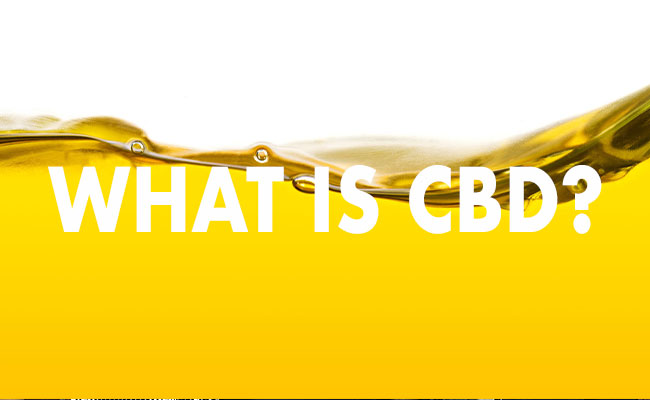
Understanding Inflammation
WRITTEN BY KIMBERLY MA AND DR. SWATHI
Swelling, redness, discomfort? Sounds like inflammation. But what does that really mean?
Inflammation is a normal and healthy physiological reaction that is initiated by our immune system and can take place in a wide variety of regions or organs within the body. It can be triggered by a number of different environmental and circumstantial triggers. In general, inflammation is an important process that is beneficial in fighting off infections and in promoting tissue healing. So, how exactly does it work?
Breakdown
Inflammation is just one response that is utilized by our body’s highly complex and evolutionarily optimized immune systems. Like all other immune reactions, inflammation is initiated and carried out by several key mediators. With perceived injury, molecules will quickly signal the body to increase blood flow to the localized area. Dilation of the blood vessels is then what causes tissue to swell and appear red. In turn, the inflamed tissue will receive higher concentrations of immune cells that can fight infections in addition to chemical mediators that promote tissue or wound healing.
Triggers
Most commonly, triggers of inflammation are things that the body perceives as harmful. However, inflammation can also be triggered by stimuli that are not actually harmful. Take for instance, allergies!
While inflammation is a very rapid response of the immune system, there may be some cases in which inflammation persists for too long. If it occurs in healthy tissue for extended periods of time, it is called chronic inflammation and it can start to damage things like blood vessels, organs, and joints. This may later contribute to the risk of developing conditions like diabetes, heart disease, obesity, and more.
Unfortunately, the warning signs of chronic inflammation are relatively unclear. Symptoms like fatigue are difficult to trace back to inflammation specifically. Therefore, it is important to take note of some of the common triggers of inflammation so you can be sure to avoid unnecessary stimulation of the inflammatory response. Here are some of the most common triggers:
- Environmental Chemicals: air pollution, car exhaust, smoke
- Injury: physical wounds,
- Pathogens: viruses, bacteria, fungi
- Radiation: UV exposure
- Physical Overexertion: excessive strenuous output
- Nutrition: high sugar, high fat
- Stress: cognitive stress, physical stress, lack of sleep
Prevention
While it’s important to reiterate that inflammation is a normal and healthy physiological response, there are different approaches to help prevent the risk of development of chronic inflammation. Being cognizant of some of the potential triggers and implementing simple lifestyle modifications can help our body’s avoid excess inflammation or stress.
Eat more anti-inflammatory foods
One of the best ways to reduce inflammation isn’t found in supplements or other therapies from your local pharmacy. Instead, they can be found in your fridge or pantry! Anti-inflammatory foods such as olive oil, tomatoes, blueberries, fatty fish (salmon, sardines, tuna, and mackerel), leafy greens, and nuts are all foods that have been shown to reduce inflammation when incorporated into the diet. The Mediterranean diet is a very popular choice among people looking to consume more anti-inflammatory foods.
Eat less inflammatory foods
Refined carbohydrates like white bread, fried foods, beverages with high sugar content (i.e. soda), red meat, processed foods, margarine, and lard, are all examples of foods that should be limited as much as possible. Eating them once in a while certainly won’t cause you to develop chronic inflammation overnight, but consuming too much of these foods over long periods of time can increase your risk of developing long term inflammation.
Maintain optimal blood sugar levels without spikes
Limit alcohol and high caffeine intake
Have a consistent exercise or movement routine
Manage your stress
Stress is a very common trigger of prolonged inflammation. But while it can be caused by a wide variety of things, it also can be mediated by a wide variety of stress relieving activities. Meditation, yoga, journaling, incorporating CBD, or participating in other activities that bring you joy are a great place to start.
Plan for adequate sleep
Inadequate amounts of sleep has been shown to increase the circulating concentrations of c-reactive protein, a key marker of inflammation. If you are having sleep troubles, try experimenting and creating a sleep routine to help you wind down each day. Also try to avoid eating too much or overexerting yourself within a few hours of bedtime.
Treatments
Inflammation does not usually require therapies and will typically resolve on its own. However, some providers may recommend supplementation of vitamin A, vitamin C, vitamin D, fish oil, probiotics, or spices that have anti-inflammatory properties like ginger or turmeric. External inflammation can also be treated with various topical products as well. CBD serums and creams have been used to calm of muscle pain, joint aches, and inflammation of the skin, whileCBD tinctures can be used to calm overall stress–cognitive or physical. In total, it will depend on where exactly you are experiencing inflammation.
When to Talk to Your Doctor about Inflammation
Talking with your doctor is always a great option when you are concerned about an injury, infection, or if you are experiencing ongoing symptoms of inflammation. They may be able to identify some of the triggers that are contributing to your inflammation as well as some lifestyle modifications that will work the best for you.
The Bottom Line
Inflammation is normal! It is because of our body’s natural defense mechanisms that we are able to do all the things we do without constantly getting sick. The majority of cases of inflammation will resolve on their own somewhat quickly, but it doesn’t hurt to be aware of how to tweak your health and wellness regimen to avoid experiencing inflammation for longer than it is welcome.
References
- Oishi Y, Manabe I. Macrophages in inflammation, repair and regeneration. Int Immunol. 2018;30(11):511-528. doi:10.1093/intimm/dxy054
- Haß U, Herpich C, Norman K. Anti-Inflammatory Diets and Fatigue. Nutrients. 2019;11(10):2315. Published 2019 Sep 30. doi:10.3390/nu11102315
- Pahwa R, Goyal A, Bansal P, Jialal I. Chronic Inflammation. https://www.ncbi.nlm.nih.gov/books/NBK493173/ Treasure Island (FL): StatPearls Publishing; 2021 Jan-. Accessed 1/27/2023
- Sureda A, Bibiloni MDM, Julibert A, et al. Adherence to the Mediterranean Diet and Inflammatory Markers. https://www.ncbi.nlm.nih.gov/pmc/articles/PMC5793290/ Nutrients. 2018;10(1):62. Accessed 1/27/23
- Dolsen EA, Crosswell AD, Prather AA. Links Between Stress, Sleep, and Inflammation: Are there Sex Differences?. Curr Psychiatry Rep. 2019;21(2):8. Published 2019 Feb 7. doi:10.1007/s11920-019-0993-4
- Leuti A, Fazio D, Fava M, Piccoli A, Oddi S, Maccarrone M. Bioactive lipids, inflammation and chronic diseases. Adv Drug Deliv Rev. 2020;159:133-169. doi:10.1016/j.addr.2020.06.028
–
This article was edited by Dr. Swathi and was written by Element Apothec Scientific Communications Intern, Kimberly Ma. She is a Doctor of Pharmacy (PharmD) candidate at the University of Connecticut School of Pharmacy in Storrs, Connecticut.











